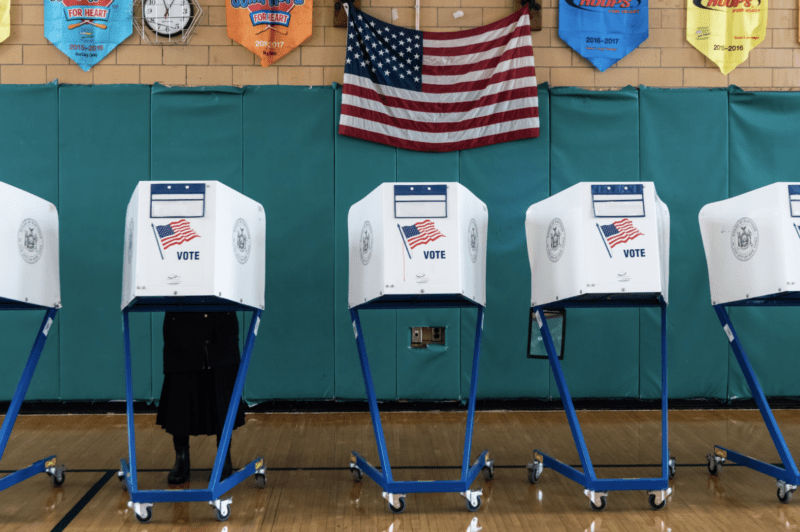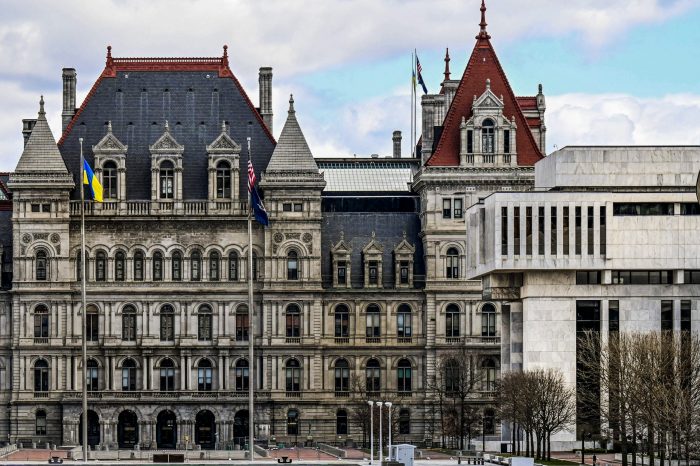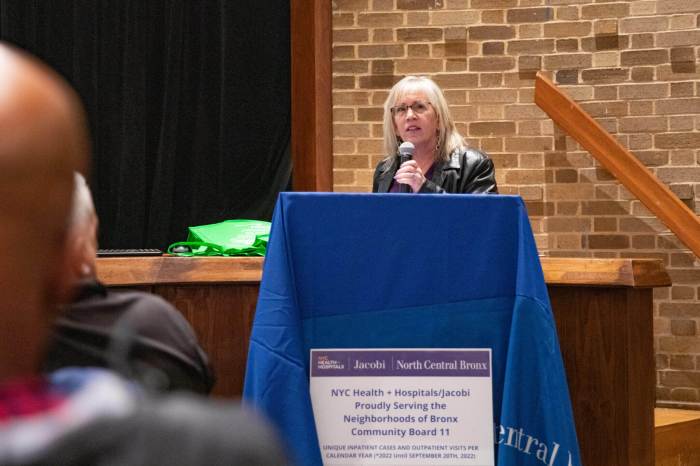New Assembly district lines drawn by the Democratic-controlled state legislature will remain in place, there will still be a June primary for those seats and there are new requirements for the August Congressional and state Senate petitioning period, a Steuben County judge ruled Wednesday.
The new ruling follows Steuben County Judge Patrick McAllister’s original decision striking down the legislature’s new Congressional and state Senate lines last month – a decision that was upheld by the state’s highest court.
In Wednesday’s ruling, McAllister said because of the tight timeline between now and the June 28 primary, it’s far too late to throw out the Assembly lines, which plaintiffs Gary Greenberg and Gavin Wax were seeking in a motion filed earlier this month.
“For the reasons stated above the court finds the motion to intervene by Greenberg and Wax to be untimely and to permit them to intervene at this time would be extremely burdensome to the court and the existing parties,” McAllister’s ruling read. “Therefore, their motion to intervene is denied.”
This comes after last month’s decision from the New York State Court of Appeals that struck down the Congressional and state Senate lines drawn by the Democratic-controlled legislature on grounds that the lines were unconstitutional because Democratic lawmakers gerrymandered them for partisan advantage.
The Court of Appeals upheld McAllister’s ruling to appoint a non-partisan expert to redraw the maps. McAllister chose Carnegie Mellon University fellow Jonathan Cervas to serve in that role – known as a special master.
Through a court order Wednesday, McAllister also set new petitioning requirements for the August 23 Congressional and state Senate primary. This includes allowing any candidates who were running for seats under the old district lines to continue doing so as long as they qualify for running in the new ones – for the state Senate, that means living in the same county where they reside.
Candidates trying to qualify for a different or running for the first time will have to begin a new petitioning process. In order to gain ballot access Congressional candidates must submit 1,062 valid signatures and state Senate candidates must gather 850.
Jeffrey Wice, a New York Law School Professor and redistricting expert, echoed the idea that McAllister didn’t move forward on tossing out the Assembly maps Wednesday because the plaintiffs didn’t file their motion soon enough to meet the May 20 deadline by which the special master must complete his work.
“The Assembly primary will be held as scheduled on June 28 under the lines that the legislature enacted in February,” Wice said “The key reason being that the plaintiffs who challenged the Congressional and state Senate districts failed to challenge the Assembly districts early enough in the litigation. And this morning, Judge McAllister ruled that their motion to intervene was simply too late. That they sat on their hands and should have acted a lot sooner, especially because they were aware of the litigation and should not have waited.”
While McAllister’s ruling left the door open for future challenges to the Assembly maps, Wice said, it’s unlikely that the lines would be thrown out because they were drawn in a generally bipartisan fashion.
“The judge opened the door to a future challenge, but that wouldn’t take place for this year’s elections, it would be in a future cycle,” Wice said. “And the Assembly lines were generally seen as a solid bipartisan plan that gained the votes of many Republican Assembly Members and represented the least from the last plan. Mostly rejoining districts to reflect population changes.”
UPDATE: This story has been updated to include Patrick McAllister’s court order setting requirements for the August 23 primary petitioning period.













